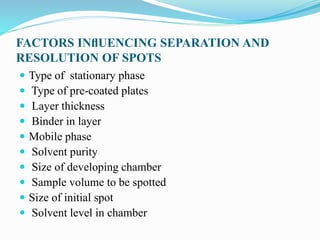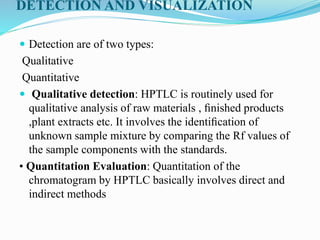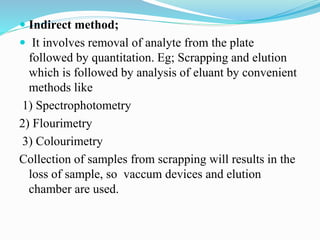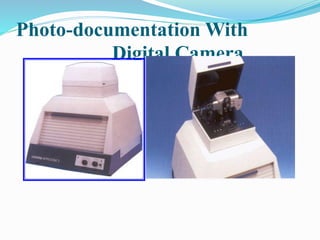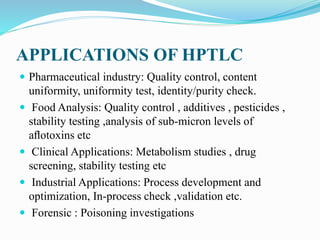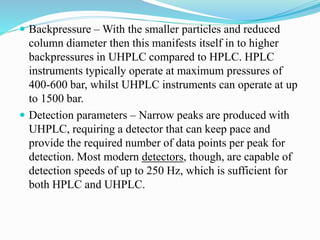This document provides information on high-performance thin layer chromatography (HPTLC). It discusses the basic principles of TLC and how HPTLC enhances it with automation. The key steps of HPTLC are described, including sample preparation, application, development, detection, and documentation. Various instrumentation, plates, mobile phases, and detection methods used in HPTLC are also outlined. HPTLC is highlighted as a useful technique for pharmaceutical analysis, food testing, clinical applications, forensics, and industrial processes.





























